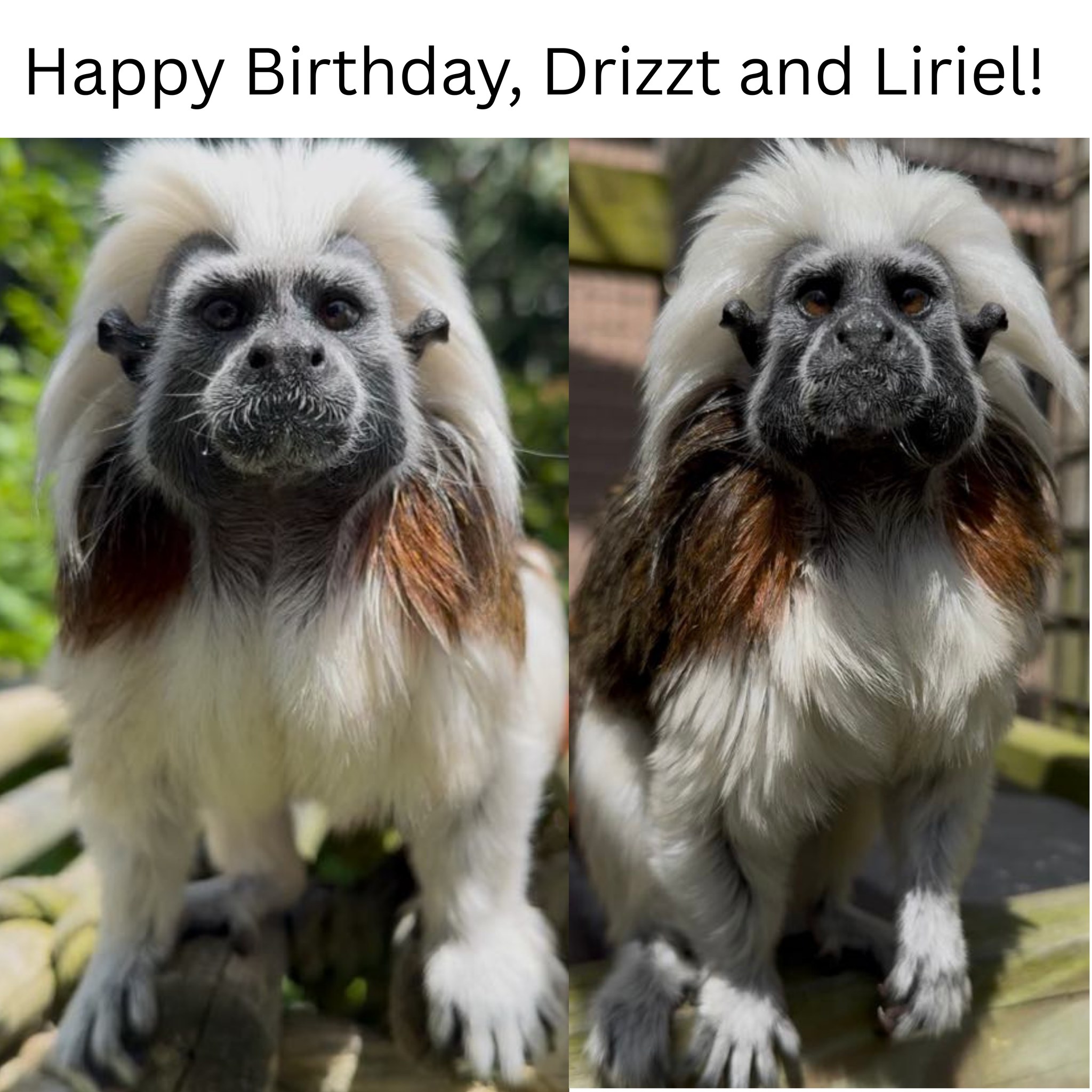- Introduction to cotton-top tamarins, their characteristics and conservation status.
- Birthday celebration and the significance of Drizzt and Liriel’s lineage and names.
- Social structure and behaviors of cotton-top tamarins.
- Conservation efforts and challenges facing this critically endangered species.
- The role of zoos and wildlife conservation in educating the public and preserving species.
Cotton-top tamarins are fascinating creatures, small yet powerful symbols of the biodiverse treasure troves found in Colombia. As critically endangered primates, their survival is precarious. This article spotlights two remarkable individuals, Drizzt and Liriel, celebrating their 4th birthday and contributing to our understanding of this incredible species.
Imagine a primate that weighs no more than a pound, with a shock of white hair reminiscent of an eraser head. That’s a cotton-top tamarin, a diminutive monkey native to the rainforests of northwestern Colombia. These creatures, known scientifically as Saguinus oedipus, are classified as critically endangered due to habitat loss and fragmentation. They occupy a critical ecological niche, helping to maintain the health of their forest ecosystems.
Drizzt and Liriel are not ordinary cotton-top tamarins; they share a unique story that blends the worlds of literature and wildlife. Named after the dark-skinned, white-haired drow elves from fantasy novels, these tamarins carry their intriguing names with pride. Such cultural references help bring attention to the individuality and allure of wildlife, potentially sparking interest in conservation.
Tamarins like Drizzt and Liriel frequently give birth to twins, a phenomenon well-documented in their species. Twin births are a compelling aspect of their reproductive strategy, enhancing the likelihood of offspring survival. Both monkeys have already made distinct choices as they mature. Liriel, like many female tamarins, moved to a new habitat nearby with Francois, an emperor tamarin. This behavior is common, as tamarins leave their original troops to establish new family groups. Drizzt, on the other hand, remains with his original troop, living alongside his father, younger brother, and sister. This decision underscores the complex social dynamics within tamarin groups.
The social structure of cotton-top tamarins is intricate and multifaceted, involving strong family bonds and cooperative care of the young. Typically, a troop comprises a breeding pair and their offspring. Unlike many other monkey species, cotton-top tamarins exhibit a system where older siblings often help raise the younger ones. This cooperative breeding system is believed to maximize the survival rate of the young, an essential adaptation given the pressures of their environment.
Celebrating Drizzt and Liriel’s fourth birthday serves as a reminder of the threats facing their species. Cotton-top tamarins are on the brink of extinction, primarily due to deforestation and illegal pet trade. The forests they inhabit are often cleared for agriculture and urban development. Protecting their natural habitat is vital, but challenges persist in implementing effective conservation strategies in regions with competing land use interests.
Moreover, the proximity to human settlements increases opportunities for illegal pet trade. These cute, little monkeys are alluring, but poaching significantly impacts their numbers. Conservationists are laboring to combat these issues, employing strategies like habitat protection, legal enforcement, and educational campaigns to mitigate the risks.
Zoos play an indispensable role in the conservation of endangered species like the cotton-top tamarin. They provide a sanctuary for breeding programs, helping to sustain genetic diversity while also serving as powerful tools for public education. Zoos showcase these animals, educating visitors about the importance of biodiversity and inspiring action to protect it. The presence of tamarins in zoos worldwide creates ambassadors for rainforest conservation, delivering a tangible connection to distant habitats.
As Drizzt and Liriel celebrate another year of life, they remind us of the delicate balance needed to sustain their species. Conservationists remain dedicated to this cause, championing efforts to safeguard the future of cotton-top tamarins against a backdrop of environmental adversity.
Cotton-top tamarins are indeed remarkable creatures, and individuals like Drizzt and Liriel offer valuable insights into their complex lifestyles and the urgent need for conservation. Every birth, every new troop established, and each interaction offers lessons about resilience and adaptation. By supporting conservation efforts and spreading awareness, we can make a meaningful difference in the survival of these enchanting animals. Happy birthday, Drizzt and Liriel, and here’s to many more milestones in the journey of species preservation.
*****
Source Description
Happy 4th Birthday, Drizzt and Liriel! 🥳
Drizzt and Liriel are cotton-top tamarins, a species of critically endangered monkey endemic to Colombia. They each weigh only 1 pound! Cotton-top tamarins most often give birth to twins, just like Drizzt and Liriel. Once mature, tamarins leave their troops to establish troops of their own, and Liriel has already left to reside in a habitat nearby with Francois, the emperor tamarin. Drizzt is still part of the original troop, living with his dad, younger brother, and younger sister. Their unique names are based on book characters – elves (called drow) with dark skin and white hair!
(📷: Zookeeper Lauren)


